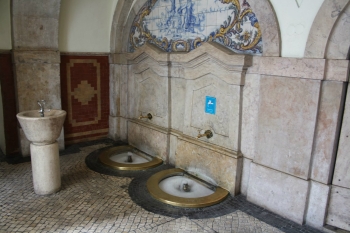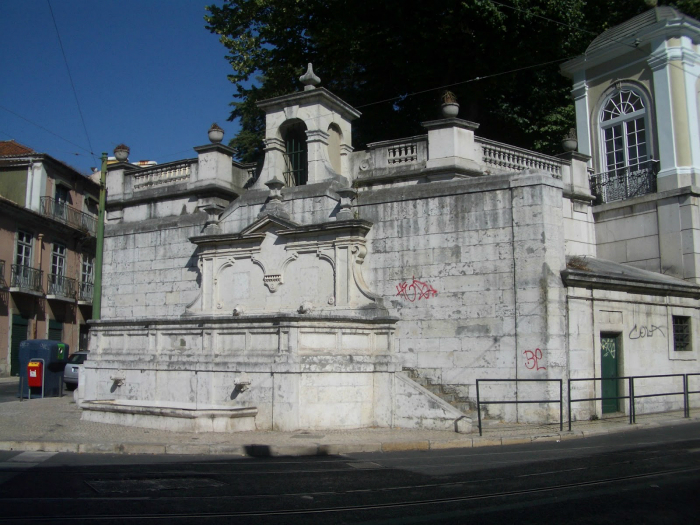Planning to take a walk through Lisbon and want to quench your thirst? Look for a fountain!

If you are planning a tour around Lisbon there are two things that you cannot miss in your backpack: a sunscreen and a water bottle! Although you can buy it in any coffee or grocery store, the city is filled with monumental drinking fountains that are part of its history and that can be very useful in the long walks to quench thirst.
But is the water safe to drink? Is not better to buy bottled water? You can drink at will, the water is fit for consumption (unless there is some specific notice to warn otherwise) and some fountains had rehabilitation works, such as the fountain of Largo da Achada, which quenches the thirst of visitors passing through Mouraria looking for the way to the Castle of St. George.
But in the past, Lisbon has suffered from lack of water, despite the Tagus river at his feet. Because of the tides, the sea enters the estuary of the river, making the water unfit for consumption. This until the construction of Aqueduto das Águas Livres, an imposing architectural structure that survived 1775 earthquake. This complex water distribution system through Alcantara valley has its most visible part of an imposing structure of 14 arches that culminates in Mãe d’Água, Amoreiras.
Both the Aqueduto and Mãe d’Água can be visited by appointment, but the city fountains are available to residents and visitors. Take note of those you can find during the Taste of Lisbon food tours.
Mouraria (and surroundings)
Fountain of Largo dos Trigueiros – Recently restored during the restoration works of Mouraria, it was located in Largo da Achada before it was moved to Largo dos Trigueiros in the 40s.
Fountain of Largo da Achada – This was the place where is was located the fountain that currently can be found at Largo dos Trigueiros. With the rehabilitation works of Mouraria it has a fountain right in the centre of the square.
Poço do Borratém – One of the oldest in the city, it was of public domain and for many years was discussed on the quality of the water. It is currently disabled and protected inside the Hotel Lisboa Tejo.
Fountain d’El Rei – This was the first public fountain in the city, taking advantage of the water supplies of good quality of Alfama.
Campo de Ourique (and surroundings)
Fountain of Fonte Santa – The only in Lisbon with the designation of ‘Fonte Santa’ (Holy Fountain) due to the medicinal properties of its water. Legend says it cured skin and eye diseases.
Fountain of Largo do Rato – The first fountain connected to the Aqueduct. In Baroque with three spouts, the upper zone was reserved for the population and the lower for the animals.

